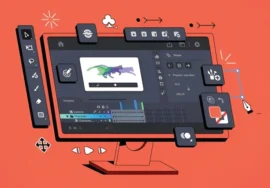
In the realm of digital creativity, 3D modeling, and animation have emerged as powerful tools for turning imagination into reality. With advancing technology, these techniques are now more accessible than ever before, allowing individuals and businesses alike to bring their 3D dreams to life. This comprehensive guide will delve into the intricacies of 3D modeling and animation, exploring the various techniques, software, and applications that can help you achieve your creative goals.
Understanding the Basics of 3D Modeling and Animation
Before embarking on your 3D journey, it’s essential to grasp the fundamental concepts of 3D modeling and animation. 3D modeling involves creating three-dimensional objects using specialized software. These objects can range from simple shapes to complex characters and environments. Once the models are created, they can be animated, bringing them to life through movement and interaction.
Key Techniques and Software
Several key techniques and software are used in 3D modeling and animation:
- 3D Modeling Techniques :
- Polygonal Modeling: This technique involves creating 3D objects using polygons, which are flat shapes that form the surface of the object.
- Subdivision Modeling: This method starts with a simple base mesh and subdivides it into smaller polygons, allowing for more detailed and organic shapes.
- NURBS Modeling: Non-uniform rational B-Spline (NURBS) modeling is used to create smooth, curved surfaces, often employed in industrial design and architectural visualization.
- 3D Animation Techniques:
- Key-frame Animation: This technique involves setting key-frames at specific points in time, and defining the object’s position, rotation, and scale at those points. The software interpolates the movement between keyframes, creating smooth animation.
- Motion Capture: Motion capture involves capturing the movements of a real-world actor using specialized suits or markers, which are then translated into digital animation.
- Procedural Animation: This technique uses algorithms and rules to generate animation, often used for complex simulations like fluid dynamics or crowd animation.
Popular 3D Software
A variety of powerful software tools are available for 3D modeling and animation:
- Blender: A free and open-source software suite that offers a wide range of features for 3D modeling, animation, rendering, and more.
- Maya: A professional-grade software used in the film and game industries for its advanced modeling, animation, and rendering capabilities.
- Cinema 4D: A user-friendly software known for its intuitive meetings and strong focus on 3D modeling and animation.
- 3ds Max: A versatile software used for a wide range of 3D applications, including modeling, animation, rendering, and game development.
Applications of 3D Modeling and Animation
3D modeling and animation have a wide range of applications across various industries:
- Film and television: Creating stunning visual effects, character animation, and virtual sets.
- Video Games: Developing realistic and immersive game environments and characters.
- Architecture and Design: Visualizing architectural designs and interior spaces.
- Product Design: Prototyping and visualizing product designs.
- Medical Visualization: Creating 3D models of anatomical structures for educational and medical purposes.
- Education and training: Developing interactive and engaging educational content.
Tips for Mastering 3D Modeling and Animation
- Start with the Basics: Begin with basic shapes and gradually progress to more complex models.
- Practice Regularly: Consistent practice is key to improving your skills.
- Learn from Tutorials and Online Resources: There are numerous online tutorials and courses available to help you learn.
- Experiment and Have Fun: Don’t be afraid to experiment with different techniques and styles.
- Join Online Communities: Connect with other 3D artists to learn from their experiences and share your work.
The Future of 3D: A Glimpse into the Horizon
As technology continues to evolve at an unprecedented pace, the future of 3D modeling and animation looks incredibly promising. Several emerging trends are poised to revolutionize the industry:
- Real-time Rendering: This technology allows for the rendering of 3D scenes in real time, enabling interactive experiences and virtual reality applications.
- Artificial Intelligence and Machine Learning: AI and ML are being used to automate various tasks in 3D modeling and animation, such as automatic rigging, motion capture, and even creative design.
- Virtual and Augmented Reality: VR and AR are opening up new possibilities for immersive 3D experiences, from gaming and entertainment to education and training.
- 3D Printing: 3D printing technology is enabling the physical realization of 3D models, from prototypes to functional objects.
Overcoming Challenges and Future Considerations
While the future of 3D is bright, there are still challenges to be addressed:
- Computational Power: High-quality 3D rendering and animation require significant computational resources.
- Talent Shortage: A shortage of skilled 3D artists and animators can limit the industry’s growth.
- Ethical Considerations: As 3D technology becomes more advanced, it raises ethical questions regarding its use in creating realistic and potentially misleading content.
To ensure the sustainable growth of the 3D industry, it is crucial to:
- Invest in Education and Training: Foster a pipeline of talented 3D artists and animators through education and training programs.
- Collaborate and Share Knowledge: Encourage collaboration between industry professionals to share knowledge and best practices.
- Embrace Ethical Guidelines: Develop and adhere to ethical guidelines for the use of 3D technology.
By addressing these challenges and embracing the opportunities, we can unlock the full potential of 3D modeling and animation, shaping the future of creativity and innovation.
In Conclusion
3D modeling and animation have come a long way, and the future holds even greater promise. By understanding the fundamentals, mastering the techniques, and staying updated with the latest trends, you can embark on a fulfilling journey of 3D creativity. Remember, the only limit is your imagination.





